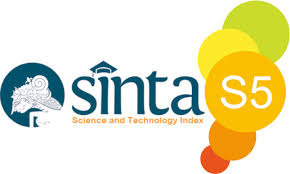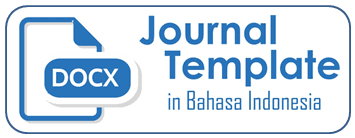Comparative Analysis of Groundwater Quality Parameters to Identify Contamination Patterns and Their Causes
DOI:
https://doi.org/10.52188/jeas.v6i1.1310Keywords:
Groundwater, Quality Parameters, Contamination patterns.Abstract
The purpose of this study was to analyze and compare groundwater quality parameters across land use zones to identify contamination patterns and underlying causes. The materials used in this study were collected from empirical studies conducted on 15 sites representing agricultural, industrial, and residential areas and analyzed for physical and chemical parameters including pH, total dissolved solids (TDS), heavy metals, and major ions. The method used in this study was comparative analysis with a qualitative approach. The results showed significant spatial variability influenced by anthropogenic activities and natural geochemical processes. Agricultural areas showed increased levels of TDS and nitrate, industrial areas showed heavy metal contamination, and residential areas showed higher turbidity. Statistical analysis revealed correlations between contamination sources and water quality parameters. The results underline the need for targeted management strategies to reduce contamination and ensure groundwater sustainability. The results identified significant spatial variability in groundwater quality across the 15 sites, influenced by natural hydrogeochemical processes and human activities. Agricultural areas showed high levels of total dissolved solids (TDS), electrical conductivity (EC), and nitrate due to fertilizers and irrigation. Industrial areas experienced heavy metal contamination, including lead and cadmium, exceeding WHO limits, while residential areas showed moderate contamination with occasional turbidity and nitrate problems. These results emphasize the impact of local human activities on groundwater quality and the need for targeted mitigation efforts.
References
Oasis Farms, Saudi Arabia, with Analysis by Atomic Absorption Spectrophotometry.Arabian Journal of Chemistry,8(2), 240-245. Retrieved fromhttps://doi.org/10.1016/j.arabjc.2011.08.018
Back, W., & Hanshaw, B. B. (1965). Hydrogeochemical facies and groundwater flow patterns in the northern part of the Atlantic Coastal Plain. USGS Professional Paper 498-A.
Biney, E., Mintah, B.A., Ankomah, E., Agbenorhevi, A.E., Yankey, D.B., & Annan, E. (2024). Sustainability assessment of groundwater in south-eastern parts of Ghana of Water Supply. Journal ofCleaner Water,1, 100007. Retrieved from https://doi.org/10.1016/j.clwat.2024.100007
Bruckner, M. Z. (2006). Ion Chromatography. Carleton College. Retrieved fromhttps://serc.carleton.edu/microbelife/research_methods/biogeochemical/ic.html
Hartiningsih, D., Diana, S., Yuniarti, MS., Ismail, MR, & Sari, QW (2023). Water quality pollution indices to assess the heavy metal contamination: A case study of the estuarine waters in Cirebon City (West Java, Indonesia) Pre- and post- CARE COVID-19. Journal of Environmental and Sustainability Indicators,21, 100318. Retrieved fromhttps://doi.org/10.1016/j.indic.2023.100318
Horton, R. K. (1965). An index number system for rating water quality. Journal of the Water Pollution Control Federation, 37(3), 300–306.
Hossain, M., & Patra, P. K. (2020). Water Pollution Index – A New Integrated Approach to Rank Water Quality. Journal of Ecological Indicators, 117, 106668. https:// doi.org/10.1016/j.ecolind.2020.106668.
Mali, M., Alfio, M.R., Balacco, G., Ranieri, G., Specchio, V., & Fidelibus, M.D. (2024). Mobility of Trace Elements in a Coastal Contaminated Site under Groundwater Salinization Dynamics. Journal of Scientific Reports, 14, 24859.Available athttps://www.nature.com/articles/s41598-024-75974-1
Mkilima, Timoth. (2023). Groundwater Salinity and Irrigation Suitability in Low-Lying Coastal Areas. Journal ofWatershed Ecology and the Environment,5, 2023, 173-185.https://doi.org/10.1016/j.wsee.2023.07.002
Nanda, A., Mahapatra, APK, & Mohapatra, B.B. (2021). Multiple Comparison Test by Tukey's Honestly Significant Difference (HSD): Do The Confident Level Control Type I Error.International Journal of Applied Mathematics and Statistics6 (1),59-65
DOI:10.22271/maths.2021.v6.i1a.636.https://www.researchgate.net/publication/348430431
Ragin, C. C. (1987). The Comparative Method: Moving Beyond Qualitative and Quantitative Strategies. Berkeley: University of California Press.
Ram, A. et al. (2021). Groundwater quality assessment using water quality index (WQI). Retrieved fromhttps://link.springer.com/article/10.1007/s13201-021-01376-7
Talabi, A. O. & Tinjani, M. N. (2013). Hydrochemical and stable isotopic characterization of shallow groundwater. Journal of Applied Water Science, 3, 229–245. Retrieved fromhttps://link.springer.com/article/10.1007/s13201-013-0076-3
Thomann, E., & Maggetti, M. (2022). Approaches to Qualitative Comparative Analysis and good practices: A systematic review. Swiss Political Science Review, 28(1), e12503. https://doi.org/10.1111/spsr.12503
Tonggiroh, Adi. (2021). Basics of Exploration Geochemistry. Makassar: CV. Social Politic Genius.
World Health Organization. (2022). Guidelines for drinking-water quality. Retrieved fromhttps://www.ncbi.nlm.nih.gov/books/NBK579464/
Wu, Y., Zhang, Q., & Li, J. (2021). Kinetic-sorption modeling of emerging organic contaminants in subsurface systems. Journal Science of the Total Environment, 774, 145142. https://doi.org/10.1016/j.scitotenv.2021.145142
Yin, R. K. (2018). Case Study Research and Applications: Design and Methods. Thousand Oaks, CA: Sage Publications.








